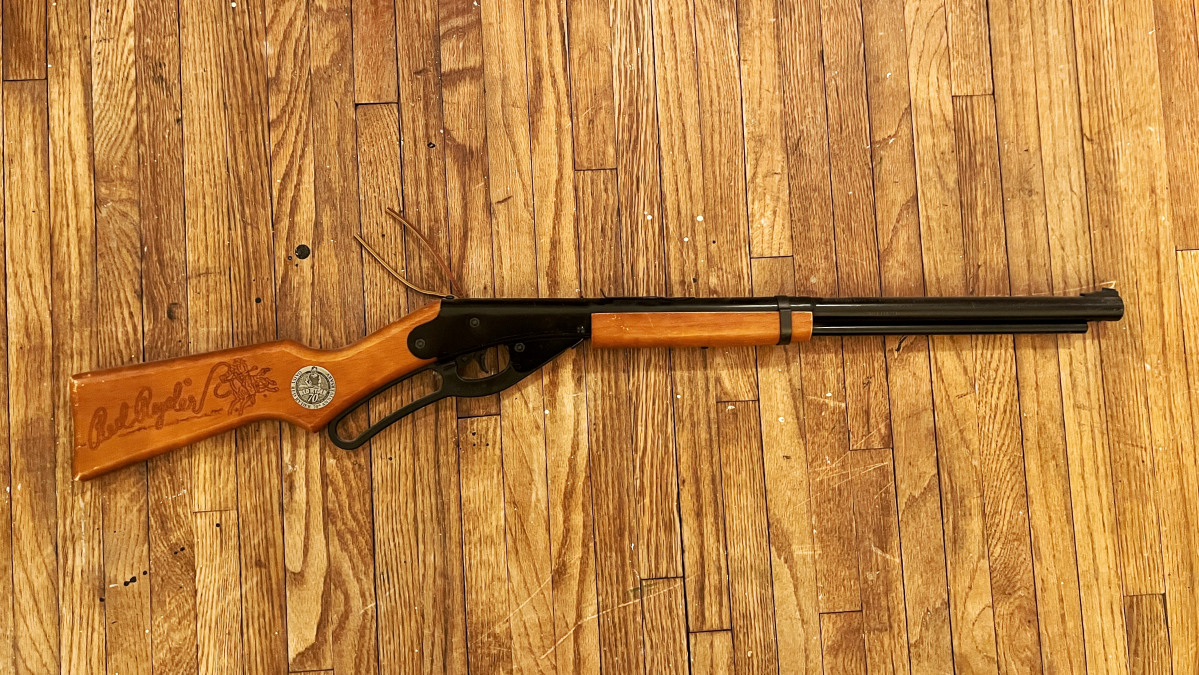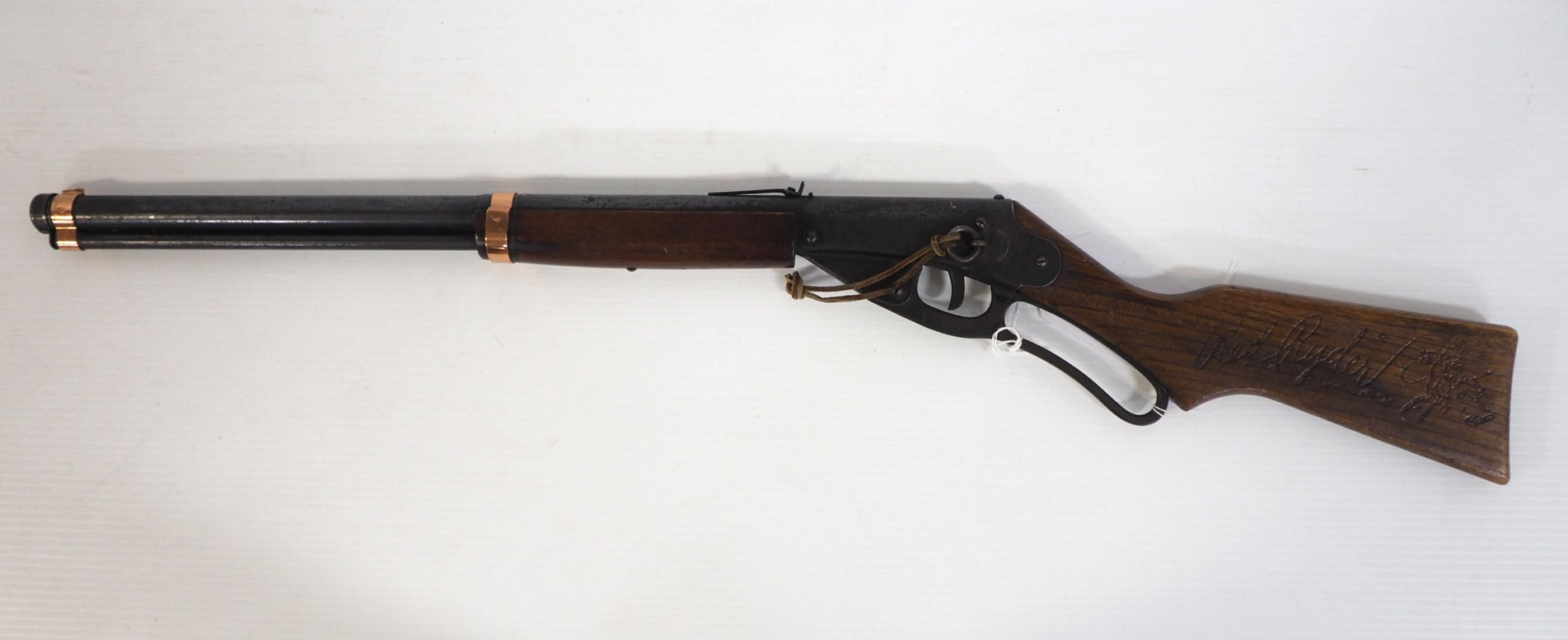Curious Relics #103: The Daisy Red Ryder BB Gun Part II
Sam.S 12.18.24

Welcome, if you are a newcomer to this fun bi-weekly segment of AllOutdoor.com! Last time, we dove into the fascinating history of America’s most iconic BB gun, the Daisy Red Ryder. We explored its origins from the Plymouth Iron Windmill Company through its development into a cultural phenomenon. Today, we’ll examine the various iterations that have graced American youth over the decades.
Note: Without having a Red Ryder specific or airgun history book handy the information below was found through research of multiple sources. Everything is converted as plainly and honestly to the best of my researching abilities in a week and a half span.
Curious Relics Coverage on AllOutdoor
- Curious Relics #098: Long Ago Long Barrel – H&R 676 22LR Revolver
- Curious Relics #099: Gotta Start Somewhere– H&R Model 676 22LR Revolver Part II
- Curious Relics #100: Easy Dating – H&R Model 676 22LR Revolver Part III
- Curious Relics #101: Love Revolver Snipers – H&R Model 676 Part IV
Welcome to our recurring series of “Curious Relics.” Here, we want to share all of our experiences, knowledge, misadventures, and passion for older firearms that one might categorize as a Curio & Relic – any firearm that is at least 50 years old according to the ATF. Hopefully along the way you can garner a greater appreciation for older firearms like we do, and simultaneously you can teach us things as well through sharing your own expertise and thoughts in the Comments. Understanding the firearms of old, their importance, and their development which lead to many of the arms we now cherish today is incredibly fascinating and we hope you enjoy what we have to share, too!
Variations: Daisy Red Ryder BB Gun
The No. 111 Model 40 (1940-1954): The original Red Ryder began life as the No. 111 Model 40, introduced in 1940. This first variant featured copper-plated barrel bands that gave it a distinctive appearance, along with beautiful wood furniture and highly polished blued steel parts. The early models included a cast iron lever and an adjustable rear sight. When World War II interrupted production in early 1942, several changes had already been implemented due to wartime material shortages.
Daisy No.111 Model 40 Red Ryder BB gun. (n.d.). proxibid. photograph. Retrieved December 16, 2024, from https://www.proxibid.com/lotinformation/45797697/daisy-no111-model-40-red-ryder-bb-gun.
Post-war: Production resumed in 1946 with blued steel barrel bands instead of the copper plating, and the barrel band was now spot-welded rather than pinched into place. By 1947, material shortages led to the introduction of a black-painted aluminum lever replacing the original cast iron version.
Daisy Red Ryder No 111 Model 40 Air Rifle. (n.d.). NRA Museums. photograph. Retrieved December 16, 2024, from https://www.nramuseum.org/guns/the-galleries/for-the-fun-of-it/case-48-airguns/daisy-red-ryder-no-111-model-40-air-rifle.aspx.
The Transition Period (1950-1951): In late 1950, Daisy began experimenting with plastics, leading to what collectors call the “Transition Red Ryder.” These models featured a unique combination of a wood stock with a plastic forearm – representing the company’s first steps toward modernization. The gun retained its fixed rear sight, saddle ring with thong, and painted aluminum lever, making it a fascinating hybrid of old and new manufacturing techniques.
The All-Plastic Era (1951-1954): By 1951, Daisy fully embraced the plastics revolution. The No. 111 Model 40 now featured both plastic stock and forearm, with the Red Ryder logo molded directly into the left side of the stock. The adjustable rear sight made a return, and the gun featured a blued finish that would later transition to painted steel in its final years.
Daisy No. 111 Model 40 Red Ryder Carbine BB Gun. (n.d.-a). proxibid. photograph. Retrieved December 16, 2024, from https://www.proxibid.com/lotinformation/73383645/daisy-no-111-model-40-red-ryder-carbine-bb-gun.
Model 94 Red Ryder (1955-1961): In 1955, Daisy completely restyled the Red Ryder as the Model 94. This variant featured several unique characteristics including a leather-wrapped buttplate and refined plastic furniture. The gun sported an innovative rear sight that could be flipped between notch and peep configurations, showing Daisy’s continued commitment to innovation despite the move to more economical materials.
Model 1938 (1972-1978): In 1972, Daisy paid homage to their roots by introducing the Model 1938, named for the year the Red Ryder comic strip debuted. This version retained the original “Lightning Loader” – the small tube under the barrel used for loading BBs. It represented a return to more traditional styling while incorporating modern manufacturing techniques.
Model 1938B (1979-Present): The modern era of Red Ryder began with the Model 1938B in 1979. This variant introduced significant changes, most notably replacing the Lightning Loader with a loading door cut directly into the barrel. While the tube beneath the barrel remained, it became purely cosmetic. The 1938B also introduced the cross-bolt safety feature that continues in current production.
Modern Production Variations: Today’s Red Ryder continues the Model 1938B legacy while incorporating modern safety features and manufacturing processes. The gun maintains its iconic 35.4-inch length and classic styling, including the signature saddle ring with leather thong. Daisy even produces an Adult Red Ryder variant with a longer stock for grown-up enthusiasts wanting to relive their childhood memories.

End of Part Two: The Legacy Continues
The Daisy Red Ryder’s evolution from its pre-war origins to today’s modern variant tells a fascinating story of American manufacturing, material innovation, and enduring design. Through wartime shortages, the plastics revolution, and changing safety standards, the Red Ryder has maintained its essential character while adapting to the times. Each variation tells its own story, from the early copper-plated beauties to the transitional wood-plastic hybrids and modern safety-conscious models. Next time, we’ll continue our examination of this American icon, diving into dating, specifications, aftermarket parts, and accessories. Until then, keep your sights straight and your powder dry!
In closing, I hope our Curious Relics segment informed as well as entertained. This all was written in hopes of continued firearm appreciation and preservation. We did not just realize how guns were supposed to look and function. It was a long and tedious process that has shaped the world we live in. So, I put it to you! Is there a firearm out there that you feel does not get much notoriety? What should our next Curious Relics topic cover? As always, let us know all of your thoughts in the Comments below! We always appreciate your feedback.




